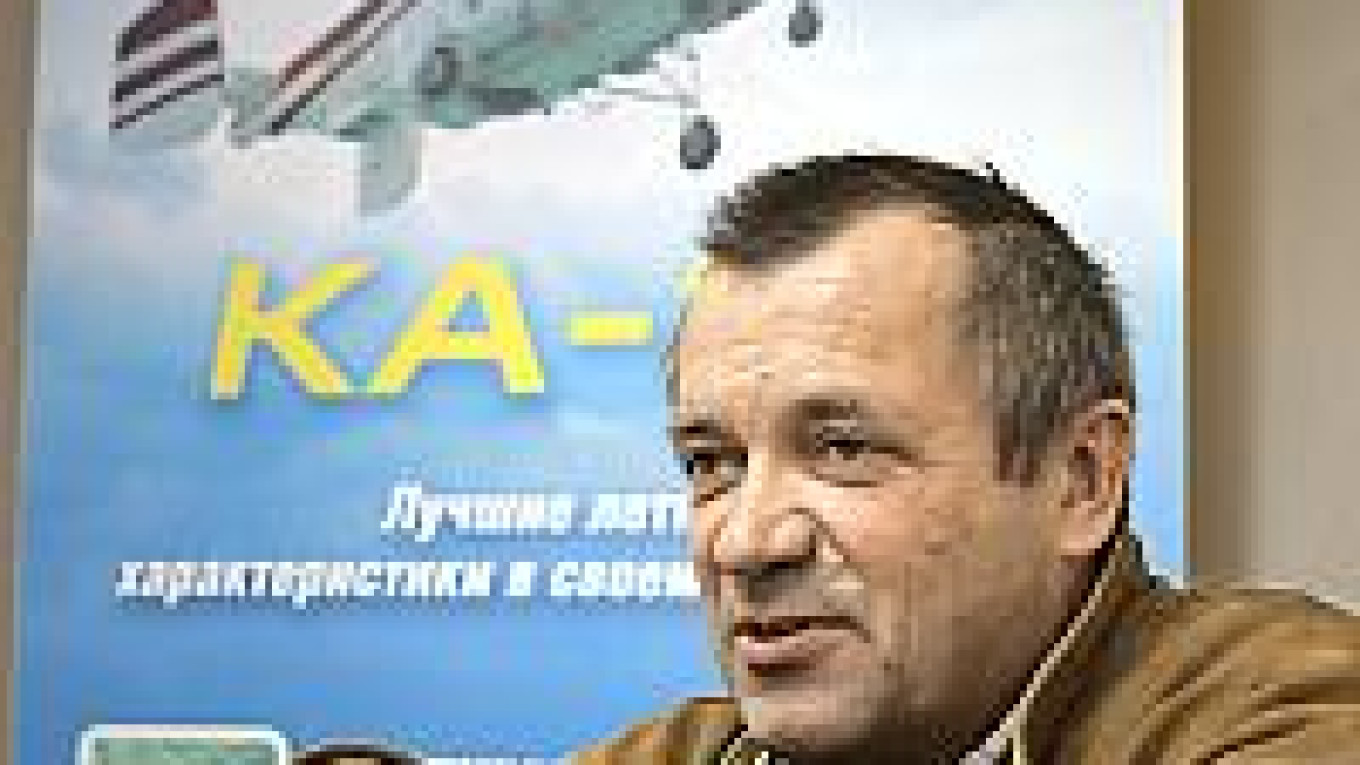Once a test pilot, Melnik lives in Spain, where he has received a royal award for his efforts in aerial firefighting. His most dangerous mission, however, came in 1986, when he was sent to help measure radiation at the Chernobyl nuclear power plant after one of its reactors exploded.
Making about 40 sorties to the area, he was hit by radiation 10 times above the permitted level. Predictably, medical complications ensued.
"In 1994, I had two operations. ... Doctors told me to stay away from drinking and smoking, and lead a normal life," Melnik said as he lit a cigarette. "A month later, I decided I would live the way I like, not limiting myself in anything."
For the past decade, Melnik, 51, has been living comfortably with his wife and son in a house in Alicante, Spain, fighting fires and helping out in emergency situations.
With what he calls a calm and stable life in Spain, Melnik said he would trade it back for the years when he did "real man's work."
"If I was given what I had back in the Soviet times, I would not have gone to Spain," he said. "What I do in Spain now is a game for kids. I used to do serious risk-related work."
Back in 1986, working as a test pilot with the Kamov helicopter design bureau, Melnik was summoned to Moscow to prepare for the Chernobyl mission. However, it was only on the way to Borispol Airport in Kiev that he was told what he would be doing.
Melnik's task was to place radiation sensors in the reactor by dropping them with a 200-meter cable from his helicopter.
"I just thought, 'Woe is my youth!' when we were told what we were about to do," Melnik said. "I was 32 years old."
A few days before flying to Kiev, he was practicing the maneuver he would have to perform at Chernobyl at the Kamov facility in southeast Moscow: dropping a heavy weight into a small circle.
"It looked like a preparation for some official show," he said.
Melnik's interest in aviation followed his father, who was among the first pilots to test-fly the MiG-9, the first jet fighter made by the famous design bureau after World War II.
In 1972, Melnik started off his career as a pilot flying the Czechoslovak L-29 trainer jet, later progressing to the MiG-17 and MiG-21 jet fighters. Five years later, he was forced to switch to civilian planes, having been decommissioned after he suffered partial hearing loss in his left ear due to a sudden depressurization in the cockpit at 7,000 meters.
Melnik moved to Aeroflot, where he got his first taste of flying helicopters. He flew various types of craft, including the workhorse Mi-8 and superheavy transport Mi-26, starting at Kamov in 1982.
After the Soviet Union broke up, Melnik, who had been named a Hero of the Soviet Union for his work in Chernobyl, had to make a move again, and he set up a cargo airline in Kiev.
"When [the country] broke up, I realized that as a Hero of the Soviet Union, I would either be wearing a dirty jacket and begging like a babushka, or have to get myself a new job," Melnik said.
In 1993, Melnik and a Bulgarian partner set up the airline in Ukraine, shipping cargo for DHL and UPS on Antonov 24s and Kamov helicopters. The business did well enough for the Spanish company Helicopteros Del Sureste to approach him in 1995 about obtaining some helicopters.
"When [the Spanish firm's representatives] came over in 1995, we had complete disorder here in the country," Melnik said. "People were pulling the wool over their eyes for months, taking them [horseriding] and to saunas, but never gave them business. In 1 1/2 months, we found six Mi-8s and two Ka-32s for them."
Melnik and his family moved to Spain, where he became a pilot and instructor for Helicopteros Del Sureste, one of the country's largest helicopter operators, and a link to Kamov, which supplies Ka-32 helicopters to the Spanish company. Business between the two firms has taken off.
Melnik has 13,400 recorded flight hours, 3,000 of them in Spain. He has trained 25 Spanish pilots, and in 1998 he received his award from Spain's King Juan Carlos for firefighting but shies away when asked about it.
"He is not a man of many words," said Luis Alzira, a pilot he trained. "He would not go about being proud. He just does it because it's his job and he likes it."
"But he is a true professional with lots of experience, and one you can learn a lot from. When you want to try something new, he shows how to do it and has faith in you," Alzira said.
A Message from The Moscow Times:
Dear readers,
We are facing unprecedented challenges. Russia's Prosecutor General's Office has designated The Moscow Times as an "undesirable" organization, criminalizing our work and putting our staff at risk of prosecution. This follows our earlier unjust labeling as a "foreign agent."
These actions are direct attempts to silence independent journalism in Russia. The authorities claim our work "discredits the decisions of the Russian leadership." We see things differently: we strive to provide accurate, unbiased reporting on Russia.
We, the journalists of The Moscow Times, refuse to be silenced. But to continue our work, we need your help.
Your support, no matter how small, makes a world of difference. If you can, please support us monthly starting from just $2. It's quick to set up, and every contribution makes a significant impact.
By supporting The Moscow Times, you're defending open, independent journalism in the face of repression. Thank you for standing with us.
Remind me later.


